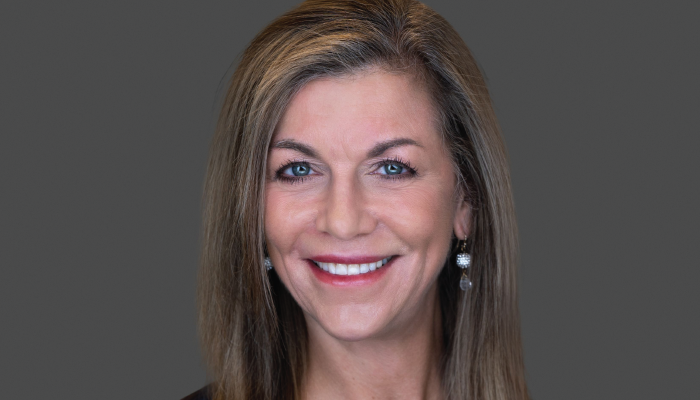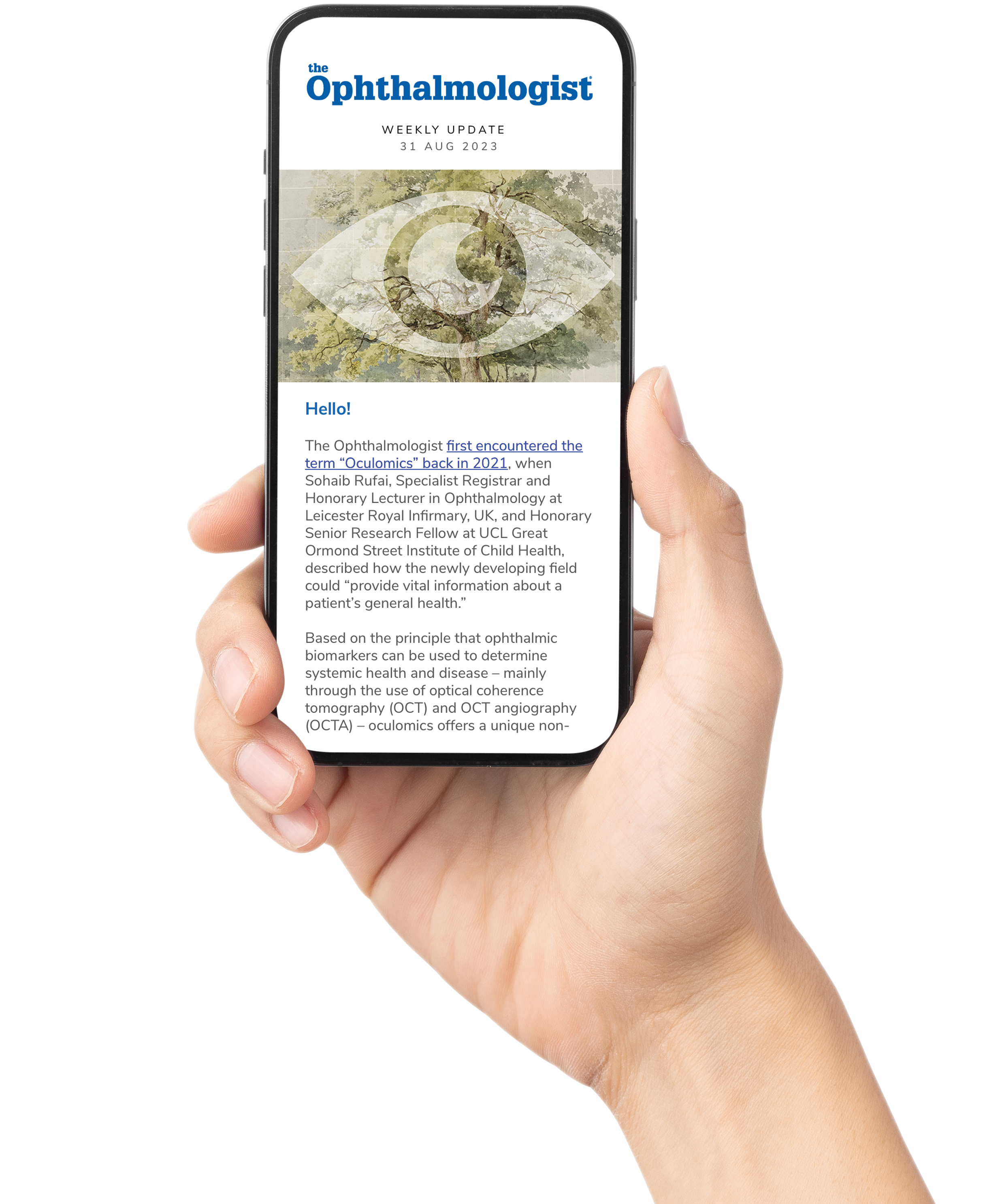
Lisa K. Feulner
About 25-30 percent of my practice is focused on treating ocular surface disease (OSD), including my refractive and cataract surgery patients, self-referrals, and referrals from physicians and optometrists in our practice and the community. My staff and I have helped many patients successfully manage OSD while running an efficient workflow. The key is to take a systematic, organized approach to diagnosis and follow a consistent treatment protocol.
Take a systematic approach to diagnosis
To gather diagnostic data systematically as part of a planned workflow, I start by educating and engaging my staff. My staff are trained to collect patients’ past ocular, medical, and lifestyle histories, including ocular and systemic meds that elevate risk for OSD. Technicians look at topography and placido rings and analyze the tear film with iTrace Prime (Tracey Technologies). At dry eye-specific visits, they also test osmolarity.
Next, I talk to patients about other risk factors, including their occupation, environmental risks, and digital device use. In the slit lamp, I observe blinking to make sure it’s complete and check for demodex, blepharitis, and meibomian gland dysfunction (MGD). During OSD evaluations – or if a patient has severe or recalcitrant OSD – I check for corneal sensation, use dyes to test TBUT, and check for staining patterns, do meibography, and perform a Schirmer’s test without anesthesia.
Explain the OSD diagnosis
A diagnostic approach that includes multiple objective tests makes it easier for me to demonstrate patients’ disease to them, and is essential for patients who have signs but are asymptomatic and may not believe they have a problem.
To educate patients about OSD, I discuss the three layers of the tear film – an oily layer made by the meibomian glands on top, an aqueous layer of the right quantity and quality produced by lacrimal glands in the middle, and a mucus layer on the bottom – and explain that their tear film layers are disrupted, causing their signs and symptoms. This paves the way for them to understand the therapies I recommend to improve the tear film.
Start with four building blocks of therapy
My approach to managing OSD is dependent on the disease severity and characteristics of the patient (for example, how willing or able they may be to participate with treatment), but everyone begins with the same four initial therapies, even if they’ve previously been treated for OSD. These “building blocks” focus on the top two layers of the tear film.
- Combine warm compresses and lid hygiene. I recommend patients use a warm compress first thing in the morning and before bedtime. They place a mask with moist liner in the microwave and put it on for five minutes. Next, they spray lid cleansing foam directly on the moist heated liner and use it to scrub their lid margins. For patients with simple meibomian gland inflammation and inspissation, iVizia (Thea), OcuSoft, Optase (Scope), and Bruder are all excellent scrubs, while patients with demodex or rosacea use tea tree oil scrubs by some of the same brands.
- Perform blinking exercises. Virtually every patient spends hours per day using digital devices with a decreased blink rate. Blinking exercises help them maintain a lubricating tear film over the eye, while exerting pressure on the meibomian glands to secrete meibum into the tear film and prevent both tear film evaporation and inspissation of the glands. I give patients a handout with instructions for blinking exercises and recommend that they download one of the apps that support these exercises, including reminders throughout the day.
- Use preservative-free artificial tears. Patients need to augment aqueous deficiency and evaporation with an artificial tear, and I only recommend preservative-free tears for patients with OSD. My current preference is iVIZIA (Thea) because I get good feedback from patients with dry eye disease, and it’s been a game-changer for my own dry eye, allowing me to wear contact lenses comfortably all day long with clear vision in the OR. I also like giving patients an easy-to-use bottle, rather than lots of disposable plastic tubes.
- Take nutraceuticals. I think it’s important to cut down on inflammation along the prostaglandin pathway, so I recommend an omega oil nutraceutical (HydroEye, ScienceBased Health), which also helps to improve the meibum.
At the start of treatment, the only addition I make to these four building blocks is the addition of Xdemvy (Tarsus) for patients with demodex. It has been a revolutionary tool in battling this mite and controlling blepharitis.
Follow up and adjust
OSD follow-up visits need to follow a routine. After patients start the four building blocks, I have them back in three to four weeks. At that point, cataract patients with mild OSD have often responded well enough to have accurate preoperative measurements. For patients who had a new diagnosis of OSD at the initial visit, this is the time for the in-depth OSD testing mentioned above (corneal sensation, TBUT, staining, meibography, and Schirmer’s). Every time I add or change therapies, I see patients about six weeks later to allow treatment time to work. These visits are an opportunity to correct course before patients give up, as well as to encourage patients who are doing well and get them back on track if they’ve been noncompliant. Once patients feel comfortable managing OSD on their own, I can see them annually.
If patients are still symptomatic after using initial four building block therapies, my next step is prescription of anti-inflammatory drops, such as Cequa (Sun Pharma), Restasis (Abbvie), Vevye (Harrow), or Xiidra (Bausch & Lomb), and punctal occlusion gel or semipermanent plugs. These medications help control inflammation, an essential goal of managing OSD, while the plugs increase tear volume on the ocular surface. In cases where meibography shows significant meibomian gland inspissation, I do thermal pulsation. My MGD patients also get excellent comfort and visual relief from Meibo (Bausch & Lomb), which prevents tear film evaporation. Others prefer Tyrvaya (Viatris), a nerve stimulator that helps them produce more tears.
I use amniotic membranes a lot in advanced cases and for patients with corneal anesthesia, autoimmune disease, neurotrophic keratitis, or anterior basement membrane dystrophy. Serum tears are another option, but they have higher costs for patients.
Use checklists
Throughout this process, I use checklists. One, an OSD preoperative algorithm form, goes to my surgical coordinator, who goes over the regimen with patients, explains its importance prior to preoperative measurements, and has patients sign that they understand.
The second is a two-sided checklist that patients take home. On it, I customize the choices for prescription medications, artificial tears, cleansing foams, and nutraceuticals. I can check off blinking exercises and possibly instruct them to pause contact lens wear. It helps me document and communicate choices very efficiently. I revisit and update the form at future visits based on test results and patient feedback. As patients bear most of the burden of managing their OSD, it’s important to be patient and flexible with the management plan, and ready to make changes so that patients can be happier and less burdened by therapy.
